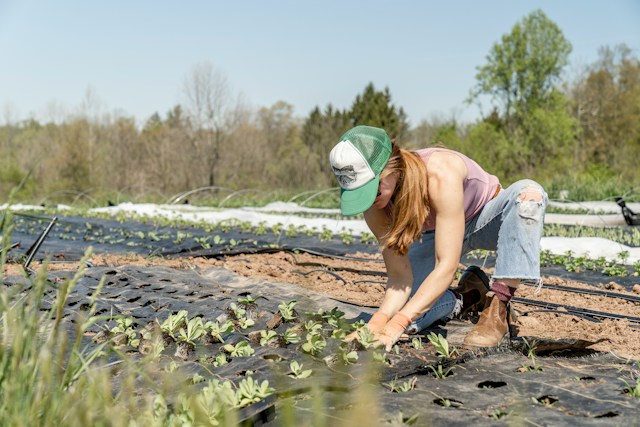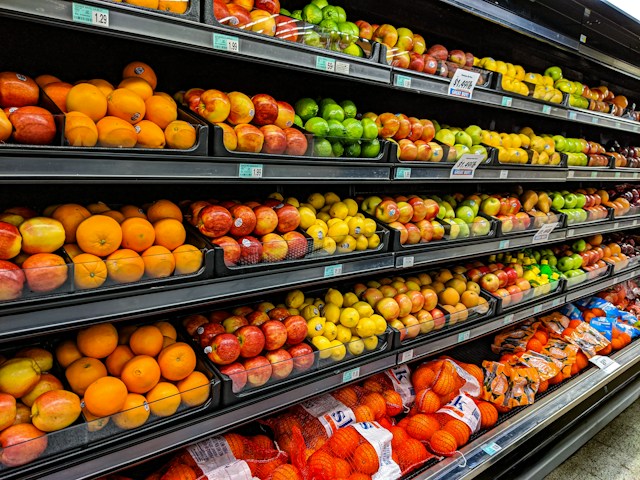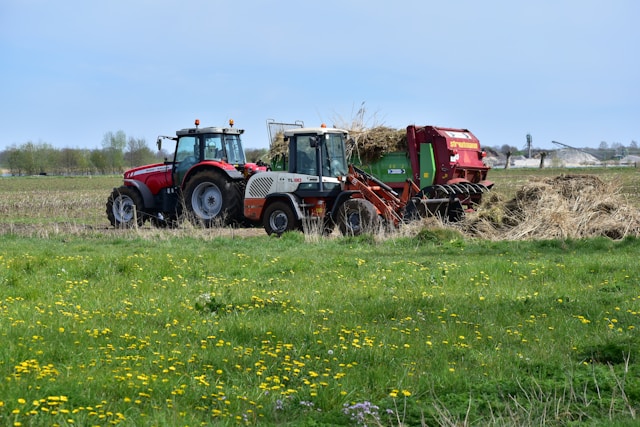In the ever-evolving agriculture industry, the role of sustainable practices has become more important than ever.
Produce growers worldwide are increasingly recognizing the need to adopt environmentally friendly methods.
However, navigating this shift can be challenging without proper guidance.
From managing water resources to prioritizing eco-friendly fertilizers, the strategies can seem overwhelming.
This article provides useful, actionable steps to streamline this transition.
Let’s dive into the world of sustainable farming and uncover effective tips to help growers make a substantial difference in their practices.
Contents
- Sustainable Management Tips For Produce Growers
- 1. Use Organic Pesticides to Protect Crops
- 2. Implement crop rotation for soil fertility
- 3. Install Drip Irrigation to Conserve Water
- 4. Apply compost for natural soil enrichment.
- 5. Practice Cover Cropping to Prevent Soil Erosion
- 6. Use renewable energy on farming operations
- 7. Sell Locally to Reduce Carbon Footprint
- The Bottom Line
Sustainable Management Tips For Produce Growers
1. Use Organic Pesticides to Protect Crops
The first step of sustainable management for produce growers is to use organic pesticides to protect the crops.
The practice of using organic pesticides is more than just an eco-friendly approach towards farming, it is a sustainable and viable measure that offers numerous benefits to crops, the ecosystem, and humans alike.
Organic pesticides, unlike their synthetic counterparts, are derived from natural sources, including plants, bacteria, and minerals.
Their mechanism of action entails working similarly to traditional pesticides, yet they cause less harm to the farmers, consumers, and the surrounding environment.
Organic pesticides are designed to break down quickly, reducing their impact on the non-targeted species and the bigger ecosystem.
Resistance build-up is slower with organic pesticides, meaning they remain effective for a longer duration without the need for stronger, potentially harmful variants.
This effectively leads to lower costs for farmers in the long term as they need less product for the same level of protection against pests.
Consumers, on the other hand, are more likely to prefer organically grown food, meaning higher market demand and prices for organic growers.
However, transitioning to organic pesticides requires careful planning and understanding of the crop production cycle and the potential challenges.
Organic pest management strategies generally tend to require more of a hands-on approach when compared to the use of conventional synthetic pesticides.
This might involve more frequent applications, closer monitoring for pests, and potentially more labor-intensive practices.
It is essential to note though that organic pesticides are not a silver bullet and they should be used as a part of a holistic pest management strategy.
Such strategies might also incorporate practices such as crop rotation and intercropping to create more biodiversity and thereby reduce the pest impact.
Integrating organic pesticides into a comprehensive pest management system ensures the overall health and sustainability of the farming operations while reaping the myriad benefits of going organic.
Therefore, organic pesticides have emerged as a key player in the drive towards sustainable produce growing, presenting an appropriate solution for safer, healthier, and more environment-friendly farming.
2. Implement crop rotation for soil fertility
The practice of crop rotation is a time-tested strategy, often overlooked but fundamental, for maintaining soil fertility and promoting sustainable farming.
Essentially, crop rotation is the process of planting different types of crops in the same area, in sequenced seasons.
It helps to break the life cycle of pests and diseases that can build up and become established in the soil over time.
Furthermore, various crops have different nutrients requirements; so rotating them can help to balance the nutrient levels in the soil.
This can particularly be beneficial in the case of nitrogen-fixing crops like legumes, which can restore the nitrogen levels in the soil when rotated with other crops.
So, instead of relying on artificial fertilizers, these natural processes can be harnessed to maintain soil fertility.
Notably, the benefits of crop rotation extend beyond soil fertility.
It plays a key role in enhancing the biodiversity on the farm, providing habitat for a variety of organisms, and promoting the health and resilience of the ecosystem.
It aids in the suppression of weeds, as different crops compete with weeds in differing manners, disrupting their growth.
Also, by alternating deep-rooted and shallow-rooted crops, it encourages better usage of water and nutrients across various soil depths.
From an economic perspective, crop rotation can also help farmers to mitigate risk and enhance profitability.
Diversifying the farm’s production can buffer against price fluctuations and market changes, or crop failure due to pest infestations or adverse weather conditions.
Thus, incorporating a well-planned crop rotation strategy can have several environmental, economic, and agronomic benefits.
However, it requires understanding the specific needs and characteristics of the crops, as well as the properties of the soil.
Therefore, farmers need to stay informed and adopt best management practices to effectively implement crop rotation and enjoy its benefits.
On the whole, it is a cornerstone of sustainable agriculture and can significantly contribute to the sustainable management of produce growers.
3. Install Drip Irrigation to Conserve Water
Focusing on water-saving strategies is paramount in sustainable farming, and installing drip irrigation is a highly effective approach.
Drip irrigation, also known as trickle irrigation, delivers water directly to the roots of the plant, reducing evaporative losses and overspray.
This system is highly versatile and can be customized to meet the exact watering needs of different crops, fostering optimal growth while conserving water.
A properly installed drip irrigation system requires lower pressure than traditional irrigation methods, which also results in energy savings.
Through its precise delivery of water, drip irrigation reduces the waste of precious resources, directly contributing to sustainable farming practices.
The effectiveness of the drip irrigation system, however, depends on routine maintenance.
Growers must periodically check the emitters, pipelines, and filters to ensure they are working properly and are free from clogs.
Employing a drip irrigation system also minimizes water-induced soil erosion because the water reaches the plant’s roots directly and does not disturb the soil surface.
Furthermore, drip systems limit the foliar diseases that can spread in standing water on the plant surface.
By helping growers better manage their water usage, drip irrigation plays a significant role in climate change mitigation.
Implementing a drip irrigation system is an initial investment that reaps long-term rewards in the form of reduced water usage, energy savings, and increased crop yield.
By adopting drip irrigation, produce growers demonstrate their determination to conserve water, one of our most precious resources.
As a method that harmonizes economic growth and environmental protection, drip irrigation is indeed a cornerstone of sustainable produce growing.
Drip irrigation proves that agricultural productivity does not have to be at the expenses of the environment; growers can achieve great results while keeping sustainability at the forefront.
Sustainable farming practices like drip irrigation are not just a trend but a necessity for the future of agriculture and the well-being of our planet.
4. Apply compost for natural soil enrichment.
To create a sustainably managed farm, applying compost for natural soil enrichment is one vital strategy that produce growers should consider.
Carefully considered use of compost enhances the soil’s productivity and promotes healthy growth of plants and produce.
Serving as a slow-release fertilizer, compost provides plants with necessary nutrients over an extended period, thwarting nutrient depletion and encouraging robust, steady crop growth.
A well-functioning compost system can tremendously reduce the need for chemical fertilizers, thus promoting a more environmentally friendly approach..
In addition, composting allows for recycling organic substances, reducing waste quantities and promoting a low-waste farming strategy..
By breaking down organic wastes, this process inhibits the growth of diseases and pests which can be harmful to crops..
It’s noteworthy that composting contributes to improving soil structure, thus enhancing its capacity to retain adequate moisture and essential nutrients..
A well-structured soil provides a conducive environment for the proliferation of beneficial soil organisms which contribute to crop health and productivity..
Notably, employing compost as a soil enriching component helps to enhance overall crop yield, directly affecting the bottom line of produce growers..
This methodology also provides cost-savings as the expense tied to purchasing and transporting excessive amounts of commercial fertilizers is minimised..
Moreover, composting encourages the sequestration of carbon into the soil, thus helping to mitigate climate change..
Being a natural soil amendment, compost is free from synthetic chemicals and thus poses minimal risk to the environment or human health if handled properly..
Produce growers can create compost using readily available farm waste materials such as crop residues, animal wastes, and food scraps, converting them into a valuable resource..
Effective compost integration into farming operations plays a central role in sustainable agriculture, offering produce growers an effective, economically viable tool to support crop health and bolster yields..
Pivoting towards this natural soil enrichment strategy contributes to achieving a truly sustainable and productive farm.
5. Practice Cover Cropping to Prevent Soil Erosion
Cover cropping, a key aspect of sustainable agriculture, aims at promoting soil’s capacity to retain its vital organic matter and nutrients.
It involves the planting of specific crops that are not for harvest, instead, they provide ground coverage that helps to reduce the impact of harsh environmental elements on the soil.
Common cover crops include grasses, legumes, and even some types of flowers which are known for their ground-covering abilities.
Cover cropping plays a significant role in preventing soil erosion and maintaining soil fertility which in turn results in quality produce.
The root systems of these plants protect the soil from erosion by water or wind; ensuring that valuable topsoil is not lost.
Another beneficial attribute of cover cropping is that it helps improve the physical structure of the soil leading to an enhanced water-carrying capacity and air circulation.
Furthermore, cover crops enrich soil biology by providing a habitat for beneficial microorganisms and insects.
When they decompose, these biological entities contribute to a continuous cycle of natural composting in the field.
The increase in organic matter in the soil from cover cropping has been shown to improve the soil’s ability to hold onto nutrients, enhancing soil fertility.
Also, certain cover crops, particularly legumes, have the added advantage of being able to fix atmospheric nitrogen into the soil, thus reducing the need for synthetic nitrogen-rich fertilizers.
It is noteworthy to mention that cover cropping also assists in weed suppression by outcompeting the weed for sunlight, soil, and nutrients making it hard for them to thrive.
Choosing the right type of cover crop to plant is largely dependent on the existing soil conditions, the main crops to be grown, and the specific needs in terms of soil improvement.
In order to obtain the best outcomes from this practice, cover crops should be incorporated into the crop rotation plan and managed properly.
From a sustainability standpoint, cover cropping plays a vital part in reducing dependency on synthetic inputs, reducing production costs, and increasing farm productivity.
Ultimately, the result is a more robust and resilient farming system which is better prepared to face the challenges posed by climate change and increasing soil degradation.
This sustainable farming practice not only benefits the environment but also enables farmers to produce healthier, quality crops that are better for consumers.
6. Use renewable energy on farming operations
Incorporating renewable energy sources in farming operations is not just a part of sustainable farming practices; it is a viable economic means of having a more productive farming operation.
Produce growers can explore various renewable energy sources like wind power, solar energy, and bioenergy to power their farming operations.
Installing solar panels, for instance, can provide power for farmer’s workshops, irrigation systems, and other equipment.
Also, during daylight hours, the excess energy generated can either be stored in batteries for later use or sold back to the grid, creating an additional revenue stream.
Wind turbines can also serve as a potent source of energy. In areas that receive abundant wind, turbines can generate significant amounts of power, which can be used for various farming operations and reducing reliance on fossil fuels.
By harnessing the power of the wind, produce growers can make their operations more efficient, environmentally-friendly, and economically viable.
Another renewable energy source that could be considered is bioenergy. Farm wastes like animal manure, crop residues, and other organic wastes can be turned into bioenergy through anaerobic digestion or gasification.
This bioenergy can be used to power farm operations, which can conveniently reduce waste and the farm’s carbon footprint.
Renewable energy allows farmers to be energy independent, reducing energy costs in the long run.
It enables growers to be more resilient and less vulnerable to fluctuations in energy prices.
Aside from cost savings, adopting renewable energy contributes to a cleaner, greener environment. It significantly reduces greenhouse gas emissions contributing to climate change.
Adopting renewable energy sends a clear message that the farmer is committed to environmental protection and the promotion of sustainable practices.
This doesn’t just create a positive image for the farm; it helps to appeal to more environmentally conscious consumers.
Lastly, various governments and institutions offer incentives and grants for implementing renewable energy systems, making it a more appealing investment for farmers.
Initiating the move towards renewable energy may seem challenging, but the long-term environmental and financial benefits make it a worthwhile investment.
7. Sell Locally to Reduce Carbon Footprint
The concept of local selling involves offering your farm produce directly to your local community.
As a produce grower, this practice has vast benefits for both your business and the environment.
It’s essential to realize that transporting goods across long distances requires ample energy, contributing significantly to greenhouse gas emissions.
The adoption of local selling by produce growers can substantially minimize these emissions, resulting in a reduced carbon footprint.
Local selling eliminates the need for long-haul shipping of produce, which is often done by cars, ships, and airplanes, all significant contributors to carbon emissions.
Moreover, selling produce locally tends to require less packaging compared to items destined for far-off markets.
This, in turn, reduces waste and the environmental impact of creating, transporting, and disposing of packaging materials.
Selling locally also enhances community relationships and fosters a sense of connectedness.
Being familiar with the people who grow your food creates a personal relationship, enhancing trust and customer loyalty.
Combining this approach with other sustainable practices, like using organic pesticides or implementing crop rotation, can make your farming operation highly sustainable.
However, transitioning to local selling requires careful planning and consideration to ensure it is the right choice for your business.
Taking community needs, your produce variety, and seasonality into account is important for making sustainable decisions.
Marketing efforts also need to be tailored, highlighting the quality of your produce and the environmental benefits of buying local.
Overall, selling produce locally offers produce growers a way to reduce their carbon footprint and contribute to more sustainable food systems.
As such, it is a vital sustainable management tip for produce growers.
The Bottom Line
Sustainable farming techniques are imperative for the preservation of our environment and ensuring food security.
By integrating methods like the use of organic pesticides, practices such as crop rotation, drip irrigation, composting, cover cropping, utilization of renewable energy and fostering local sales, we can greatly enhance the sustainability of agriculture.
Through these approaches, we not only protect our precious soil and conserve water, but also enrich the earth naturally and minimize the carbon footprint of our farming operations.
Ultimately, embracing these efficient and environmentally friendly tactics will help bolster the health of our planet and the well-being of future generations.




